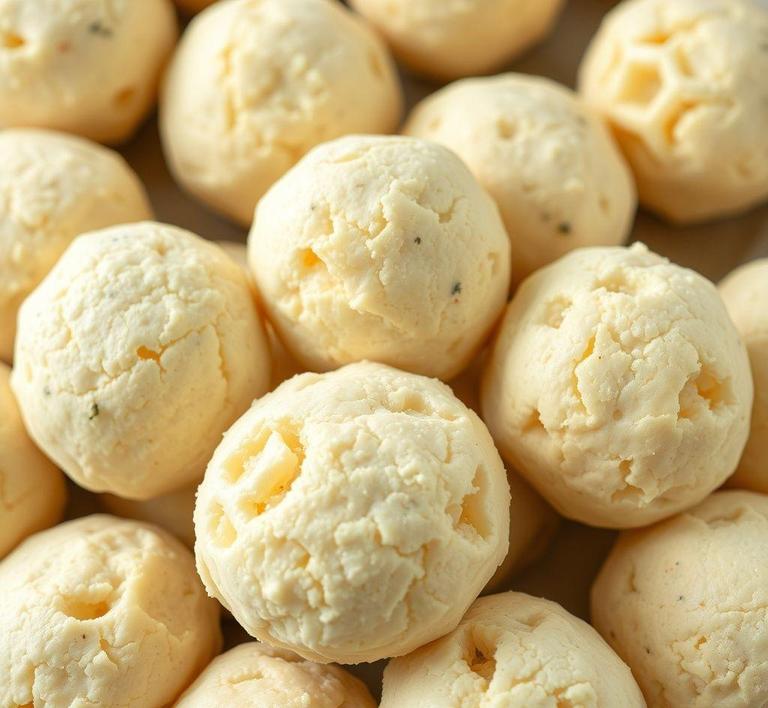If you’ve ever made a big batch of matzo balls and found yourself with leftovers, you might be wondering: can you refreeze matzo balls? The answer is yes, you absolutely can! Refreezing matzo balls is a great way to save time and avoid wasting food, especially if you’re preparing for a future holiday or family gathering. However, there are some tips and tricks to ensure they stay just as fluffy and delicious after being frozen and thawed. In this guide, we’ll walk you through the best methods for freezing, thawing, and reheating your matzo balls, so you can enjoy them even after they’ve been through the freezer a second time.
Can You Refreeze Matzo Balls?

The short answer is: yes, you can refreeze matzo balls – but with caveats. Matzo balls, those fluffy dumplings made from matzo meal, eggs, oil, and often a hint of seltzer for extra lightness, are delicate by nature. Once cooked, they have a soft, sponge-like texture that is prone to absorbing moisture. This very trait that makes them so appealing in soup also makes them vulnerable during freezing and thawing cycles.
Refreezing matzo balls is possible whether they were previously frozen raw or cooked. However, the decision to do so should be based on a few critical considerations, including how they were handled between thawing and refreezing. If the matzo balls were kept at a safe temperature (below 40°F/4°C) and not left out for more than two hours, they can be safely refrozen. But remember, safety is just one part of the equation – quality is the other.
How To Refreeze Matzo Balls?
If you’re planning to refreeze matzo balls, take care to do it correctly to preserve as much texture and flavor as possible.
Step 1: Cool and Dry
If the matzo balls have been reheated in soup or broth, remove them and let them cool on a paper towel-lined plate to absorb excess moisture. This is crucial – excess liquid leads to freezer burn and soggy dumplings.
Step 2: Flash Freeze (Optional but Recommended)
Place the cooled matzo balls on a baking sheet lined with parchment paper and space them apart. Put the tray in the freezer for 1-2 hours until the matzo balls are firm to the touch. This process, known as flash freezing, prevents them from sticking together in a clump once stored in bags or containers.
Step 3: Package Properly
Transfer the frozen matzo balls to an airtight freezer-safe container or zip-top freezer bag. If you’re using bags, remove as much air as possible to avoid freezer burn. Label with the date so you can keep track of how long they’ve been stored (ideally no more than 2-3 months for best quality).
Step 4: Refreeze Promptly
Place them back in the freezer immediately. Avoid multiple thaw-and-refreeze cycles, as each one will degrade the texture and increase the risk of spoilage.
Quality Impact
Here’s where the story gets textured – literally. Matzo balls that have been refrozen may not retain the same tender, cloud-like fluffiness that makes them so beloved in chicken soup. Each freeze-thaw cycle affects the structure of the matzo meal, which is already porous and quick to soak up surrounding liquid. Refreezing can exacerbate this, causing the balls to become denser, more rubbery, or to fall apart more easily when reheated.
Moreover, ice crystals formed during the initial freeze can disrupt the internal structure. Upon thawing and refreezing, those crystals melt and reform, breaking down the integrity of the dumpling further. This can result in matzo balls that are either too mushy or oddly chewy – far from the pillowy perfection you originally served.
That said, the degree of impact also depends on the original preparation. Denser matzo balls (those made with less seltzer and more meal) tend to survive freezing better than ultra-fluffy versions. Likewise, matzo balls that are stored dry, separate from broth, tend to refreeze more gracefully than those soaked in soup.
Refreezing matzo balls is certainly possible – and sometimes necessary – but it’s a culinary compromise. If done correctly and with attention to handling and storage, you can preserve their essence for future use. However, expect a change in texture, and consider whether that’s acceptable for your next dish.
If you’re aiming for top-tier flavor and mouthfeel, a better strategy might be to freeze them only once, perhaps in larger batches to avoid the need for refreezing altogether. Alternatively, you can freeze the uncooked matzo ball mixture and shape/cook them fresh, achieving optimal consistency without sacrificing convenience.
In the end, while matzo balls can be refrozen, the ideal is to plan ahead and freeze in portions that meet your immediate needs. That way, each bite remains a nostalgic echo of that first steaming bowl – tender, comforting, and just as you remember.
Is It Safe To Refreeze Matzo Balls?
The short answer: Yes, it is generally safe to refreeze matzo balls-but with some important caveats.
Matzo balls, typically made from a mixture of matzo meal, eggs, fat (such as chicken schmaltz or oil), and seasoning, are relatively delicate in texture and high in moisture content. If they’ve been cooked and then thawed properly (i.e., in the refrigerator and not at room temperature), they can be refrozen without posing a significant food safety risk. However, each freezing and thawing cycle can degrade the quality-especially the structure and flavor.
Safety-wise, the key factor is whether the matzo balls have been kept at a safe temperature throughout their journey. According to USDA guidelines, foods that have been thawed in the refrigerator can be safely refrozen without cooking. That means if your matzo balls were thawed in the fridge and remained there for no more than a couple of days, you’re generally in the clear.
However, texture is another matter. Upon refreezing, matzo balls may become soggy, rubbery, or grainy depending on the ingredients and how they were initially cooked. The soft, pillowy quality that makes a matzo ball so beloved may be diminished by repeated freeze-thaw cycles. As such, it’s better to portion matzo balls into smaller batches before freezing so you can thaw only what you need.
Signs That Matzo Balls Should Not Be Refrozen
Just because you can refreeze matzo balls doesn’t mean you always should. Here are clear warning signs that your matzo balls should be discarded rather than returned to the freezer:
-
Off Smell:
A sour or sulfurous smell is a sure indicator of spoilage. This can occur if the matzo balls were kept in the fridge too long after thawing or were not cooled properly before freezing.
-
Slimy or Sticky Texture:
A natural softness is expected, but if your matzo balls feel overly slick, gummy, or sticky, they may be harboring bacterial growth and should be thrown out.
-
Mold or Discoloration:
Visible mold (white, green, or blue fuzz), or darkened spots, are obvious signs of spoilage. Don’t try to cut off the affected areas-just discard the entire batch.
-
Thawed at Room Temperature:
If the matzo balls were left out at room temperature for more than two hours before you considered refreezing, they’ve likely entered the bacterial "danger zone" (40°F-140°F), and refreezing is not safe.
Common Refreezing Mistakes
Mistake 1: Refreezing After Improper Thawing
Thawing matzo balls on the counter, in a warm water bath, or even in the microwave can bring them to unsafe temperatures, allowing bacteria to multiply. Only thaw in the refrigerator or during cooking.
Mistake 2: Refreezing with Broth
Freezing matzo balls submerged in broth might sound like a good idea for preserving moisture, but it makes the balls harder to thaw evenly and can result in mushy, broken-down texture. Instead, freeze them separately from broth in a single layer.
Mistake 3: Multiple Freeze-Thaw Cycles
Each cycle weakens the integrity of the matzo ball. Try to freeze in small batches to avoid having to thaw more than you need.
Mistake 4: Not Cooling Properly Before Freezing
Putting hot or warm matzo balls straight into the freezer traps steam, leading to ice crystals and freezer burn. Always cool completely before freezing.
Tips And Tricks
-
Freeze Before Cooking for Best Results:
Freezing the uncooked matzo ball mixture (already shaped into balls) provides the best post-thaw texture. Just freeze them on a parchment-lined tray, then transfer to an airtight container. Boil them from frozen when ready.
-
Use Airtight, Moisture-Proof Containers:
Double wrap: use plastic wrap followed by freezer bags or a vacuum-sealed container to prevent freezer burn.
-
Label and Date:
This prevents you from forgetting when they were frozen. Matzo balls are best consumed within 2-3 months for peak quality.
-
Reheat Gently:
If you’ve already cooked your matzo balls before freezing, reheat them gently in simmering (not boiling) broth. Boiling too hard can cause them to break apart.
-
Consider Texture Preferences:
If you prefer dense matzo balls (as some families do), they tend to freeze and refreeze better than the very light and fluffy kind.
Conclusion
Refreezing matzo balls is a viable option if done mindfully, though not ideal for preserving perfect texture. Safety always takes precedence-ensure that your matzo balls were properly cooled, stored, and thawed before considering a second freeze. When handled correctly, you can safely preserve these comforting dumplings for later enjoyment without sacrificing too much quality.
Whether you’re preserving the last of your grandmother’s matzo ball soup or planning ahead for a holiday feast, knowing how to refreeze them properly ensures your kitchen remains both safe and delicious. With a bit of foresight and care, you can enjoy matzo balls that are nearly as good as fresh-even from the freezer.


